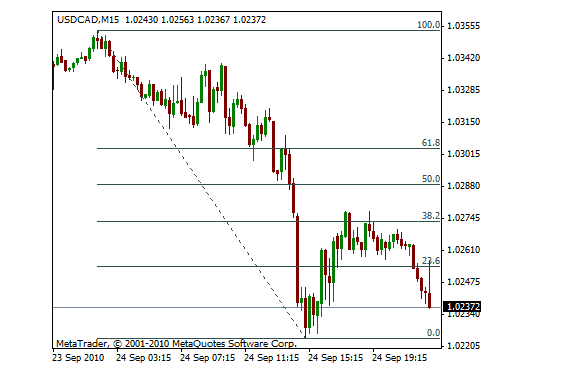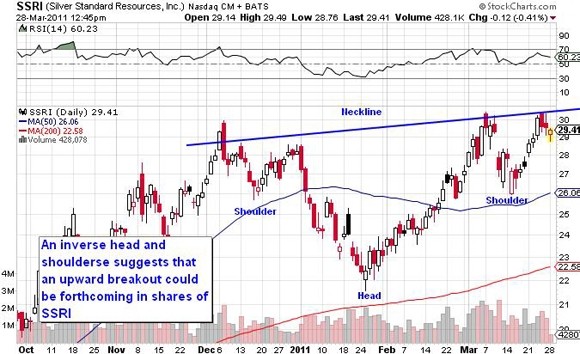Support and Resistance Technical Analysis Primer Stockpickr! Your Source for Stock Ideas
Post on: 19 Январь, 2017 No Comment

By Jonas Elmerraji
Senior Contributor
03/04/11 — 05:33 PM EDT
BALTIMORE (Stockpickr ) — Support and resistance are two technical terms that most investors have probably heard at one time or another. These two technical price levels aren’t just key tenets of technical analysis; these two simple concepts are also the basis of many of Wall Street’s most-successful trading strategies.
Like most analysis concepts, though, it’s not enough to understand what support and resistance are; success comes from knowing how to put it into play.
More From Stockpickr
Today, we’ll take a look at how support and resistance works, how to determine these key levels, and how to put them to work for your portfolio starting from day one.
Simply put, support and resistance are price levels that stocks have trouble moving beyond. Support acts as a sort of price floor for a stock, whereas resistance acts as a price ceiling.
Frequently, would-be technical analysts can become pretty skilled at picking out support and resistance levels without actually understanding the mechanics of how these price levels work to restrict stocks’ movements. You’ll be happy to know that these prices aren’t magical levels — instead, they’re a function of investor psychology and market mechanics.
So how can these “price barriers” exist in the market?
Ultimately, market prices are determined by what investors are willing to pay, supply and demand. If a stock is trading higher (in a phenomenon known as a trend), it can come across a pocket of supply that completely absorbs buyers’ bid prices. When that happens, the uptrend halts as trades get filled at the same price level — a price that’s now become resistance. With all of that overhead supply, it’s impossible for share prices to move higher under the calm, steady buying that had previously helped shares rise. Support works much the same way, except that support levels occur where there is a glut of demand for shares that absorbs all of the ask activity for the stock.
Fundamental investors often have difficulty coming to terms with the idea that past prices can have an impact on future prices. But as anyone who’s ever owned a stock can probably attest, watching your position change in value is hard to ignore. It’s naive to think that those past prices (like investors’ entry prices) don’t have an impact on when they ultimately choose to sell.
How to Spot Support and Resistance Levels
Generally, there are three ways that technical traders determine support and resistance levels: intermediate reversals, round numbers and moving averages.
Above: Intermediate peaks connected on shares of
TSP reveal a staunch resistance level at $25.50.
The most common way to find support or resistance levels is by looking at intermediate reversals — in other words, the points where trends have turned around and changed direction in the past. By connecting those peaks, you can draw a support or resistance line that restricts a stock’s price action. These types of support and resistance can be either horizontal (at a set price level) or sloping trends.
Because investor psychology ultimately sets the market, round numbers can also act as important support and resistance levels. That’s because when a stock approaches a round number, such as $10 or $100, investors have preconceived notions that the stock may be getting “expensive” or “cheap,” prompting them to sell or buy shares accordingly. This can lead to broken trends at these prices.
Moving averages are also important indicators of support and resistance levels. Because they represent the average prices paid by investors for a given issue over a certain period, the psychological impact of a moving average can be tangible. When it comes to picking the appropriate moving average, some experimentation is sometimes required to find the MA that best restricts price action. (For more on moving averages, check out Making Sense of Moving Averages .)
How to Use Support and Resistance

Since support and resistance give a good indication of price barriers for a stock, they’re incredibly useful tools to use when making trading decisions. For example, buying at support often means that a trader is getting in at the best price. Likewise, selling at resistance removes many of the risks of a violent reversal. Using support levels to set your stop loss prices is another effective way of managing risk and unloading a stock when it proves unable to follow your technical cues.
Even if you’re not actively trading, support and resistance levels can give investors important perspective over their portfolios. If shares of a stock are falling, knowing that a strong resistance level is nearby can save you from selling prematurely.
Inevitably, because the myriad factors that price stocks are constantly changing, support and resistance levels can fail. As with any other technical analysis tool, they provide high probability expectations for a stock’s price, not an absolute prediction of the future. For that reason, waiting for confirmation of a “bounce” off of support or resistance is essential. Confirmation can vary depending on trading styles and timeframes, but generally, you can consider a bounce confirmed after a second consecutive bar that moves progressively away from a support or resistance level.
While no indicator is a crystal ball for a stock’s movement, support and resistance can provide an effective, profitable framework for estimating a stock’s behavior. Next week, we’ll add to your technical repertoire with another primer that will bring you closer to implementing technical analysis for your portfolio.
In the mean time, do you have a burning technical analysis question? Get it answered by heading to Stockpickr Answers.
— Written by Jonas Elmerraji in Baltimore.
RELATED LINKS:
>>4 Stocks Setting Up to Break Out
>>Understanding Candlestick Charts
>>Must-See Charts: MetLife, Toyota, QQQQ
Jonas Elmerraji, based out of Baltimore, is the editor and portfolio manager of the Rhino Stock Report, a free investment advisory that returned 15% in 2008. He is a contributor to numerous financial outlets, including Forbes and Investopedia, and has been featured in Investor’s Business Daily, in Consumer’s Digest and on MSNBC.com.














